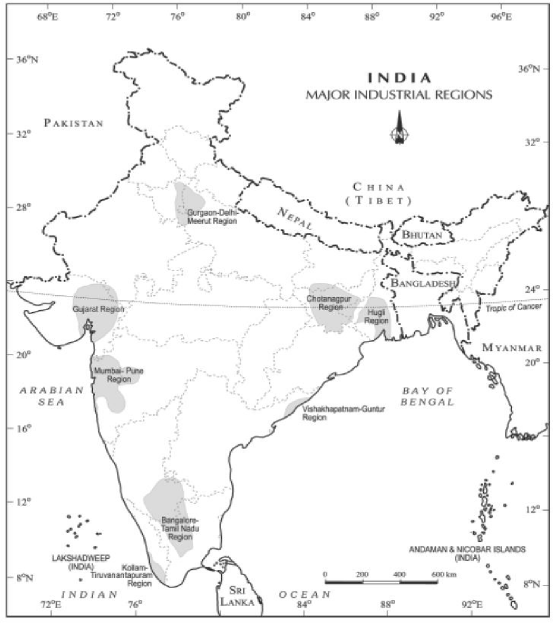Advantages and Factors of Development
(i) Raw material: Enough raw materials are available locally for jute, paper, chemical, silk, leather and engineering industries,
(ii) Port facilities: Kolkata and Haldia ports facilitate import of necessary inputs and export of finished products.
(iii) Sources of energy: Coal and electricity are available from Damodar Valley nearby.

(iv) Water: Enough water is available from Hooghly and groundwater sources for industries such as jute and paper mills.
(v) Capital and banking facilities: Kolkata being a major trade centre, capital and banking services are easily available.
(vi) Transport: Railways and roads link this region with all parts of the country. Rivers Damodar and Hooghly are navigable. Before independence this region was linked with Assam and the other parts of northeast through Brahmaputra waterway.
(vii) Labour: This region is surrounded by areas of high density of population. Therefore, there is no shortage of labour. Trained manpower is also available around Kolkata.
Important Industries: Important industries of this region are jute, paper, cotton textiles, automobiles, engineering, electrical goods, chemicals, drugs and pharmaceuticals, diesel engines, machinery for textile and sugar mills, cycles, paints, rubber goods, pottery, silk textiles, vegetable oil and match industries.
Chief Industrial Centres: Haldia, Serampur, Rishra, Howrah, Kolkata, Sibpur, Naihati, Kakinara, Titagarh, Birianagar, Bansberia, etc. are the important industrial centres in this region. Silt deposition in Hooghly poses problems to navigation. Farakka Barrage has been built to regulate the flow in the Ganga to solve this problem. Special ships are used for de silting the Hooghly River. Haldia port on the coast of the Bay of Bengal has been developed to reduce pressure on Kolkata port.

